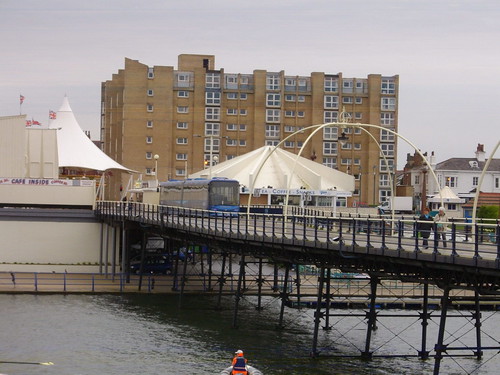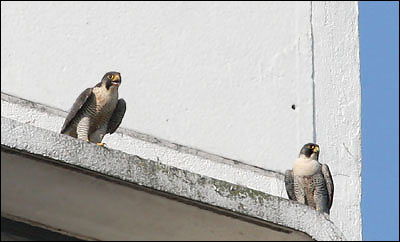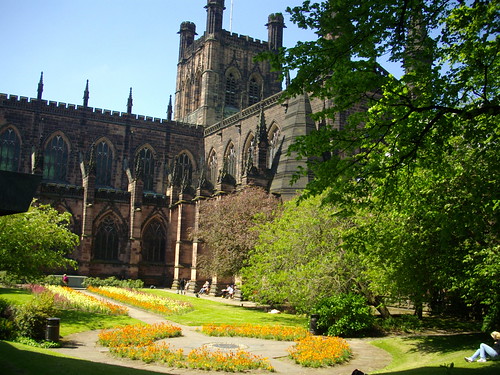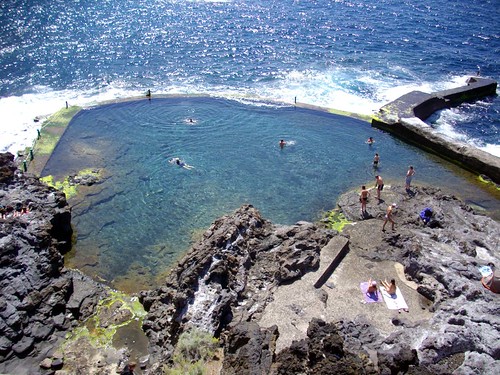On my first day back in England, the sun had got his hat on, but since then it has added a duffle coat, balaclava, scarf and brolly-typical spring weather for blighty. Time to get down with nature, and a trip out to Formby Point to the National Trust reserve near the beach, famous for its hoards of red squirrels, sadly a notice advised that there was little chance of seeing any as they have been decimated by squirrel pox – so that’s what happened to Tufty. On to the beach and a few brave souls were flying kites in the face of a freezing wind off the sea, time for a strategic retreat.
Onward to Southport, here after known as the last resort, we resisited the lure of the lawnmower museum, I kid you not, and strolled through town in the rain, trying to find something of interest. The information centre made much of them having the longest iron pier in the UK, I should imagine that suicide is the most popular past time in Southport.

Thursday was a leisurely day in Manchester, trying to keep warm. Last time I was over the vote on a congestion charge for the city centre was due, the council argued that a NO vote would mean no money to improve the local transport system. NO was the loud and resounding response, and yesterday, despite the threats, a quarter billion pound government investment for the Metro and Park and Ride was announced. The Metro is a great system, we travelled in to Manchester centre from Bolton, they even have upright cycle lockers at the car park so cyclists can link easily to the centre.
It was good to catch up on Manchester’s Peregrine Falcons, last year we saw a pair on the high ledge of a nearby hotel, through a telescope viewing point provided by the RSPB in Exchange Square. The birds are back again this year and have hatched another 4 chicks, thanks to the RSPB it is possible to see pics of them on the nest and also hunting for food. The falcons eat local pigeons, and the male can be seen on its favourite resting place, on top of the letter E in the name of the Arndale Centre.

So much for our trek to Formby, might as well let the wild life come to us. Talking of treks, me and Pam are off to see the new Star Trek film tonight, years since I have been to a cinema, hope they still do Kio Ora and Poppets, if not I’m sure a decent real ale afterwards at the local pub will be suitable compensation.























 Â
 
 If the word FREE made you sit up and take notice, you will like La Laguna, my tram trip from Santa Cruz bus depot was FREE on my Bono bus ticket, as I had just come off the 110 direct Titsa bus from Los Cristianos (make sure you have at least .95 cents on your ticket in case – I don’t want to drop you in for a big fine). Most of the shopping areas of La Laguna are pedestrianised, so it’s a nice place to explore and has several museums and historic buildings. There are FREE daily mid morning multi lingual sight seeing tours from the
If the word FREE made you sit up and take notice, you will like La Laguna, my tram trip from Santa Cruz bus depot was FREE on my Bono bus ticket, as I had just come off the 110 direct Titsa bus from Los Cristianos (make sure you have at least .95 cents on your ticket in case – I don’t want to drop you in for a big fine). Most of the shopping areas of La Laguna are pedestrianised, so it’s a nice place to explore and has several museums and historic buildings. There are FREE daily mid morning multi lingual sight seeing tours from the 



